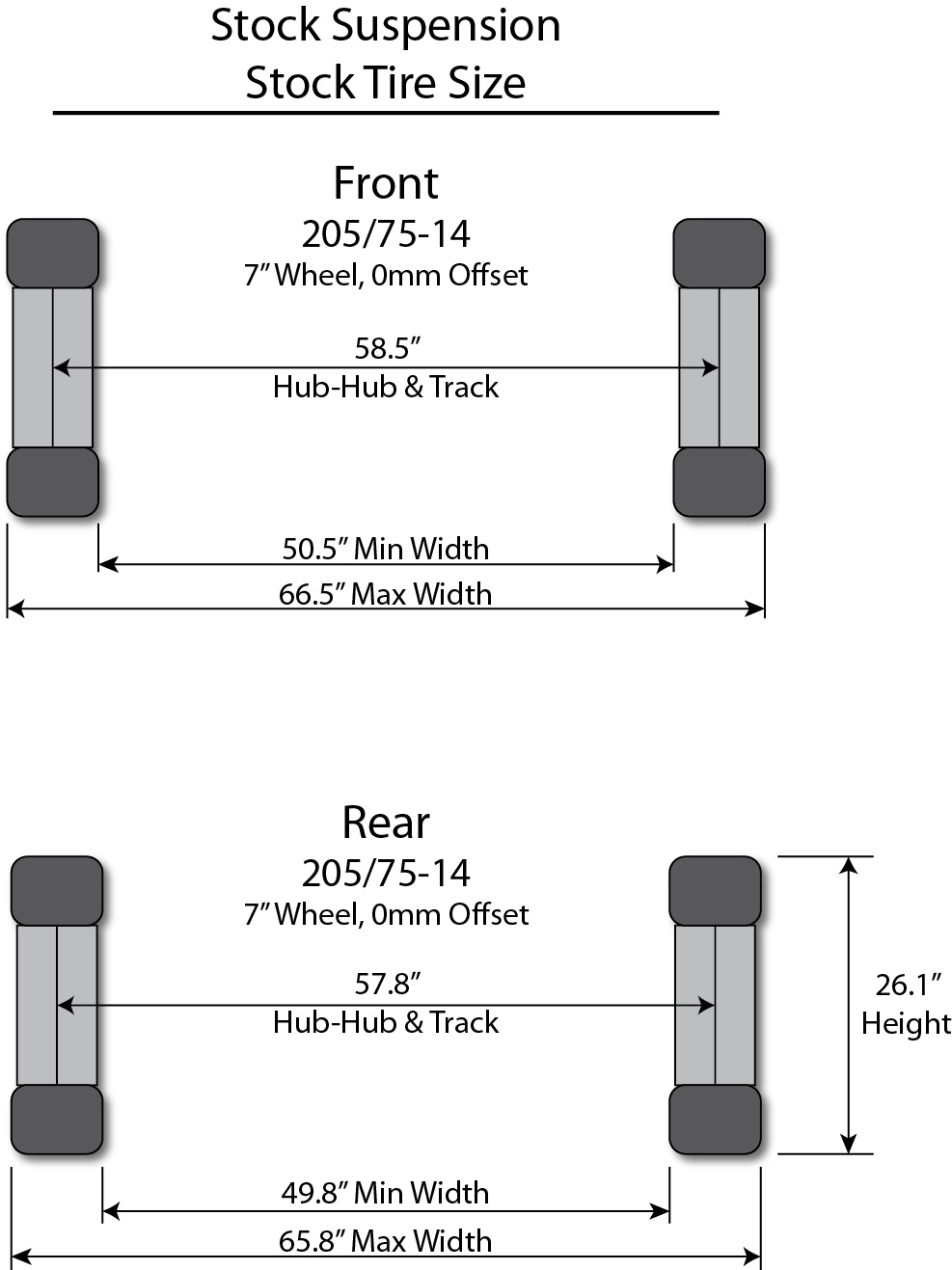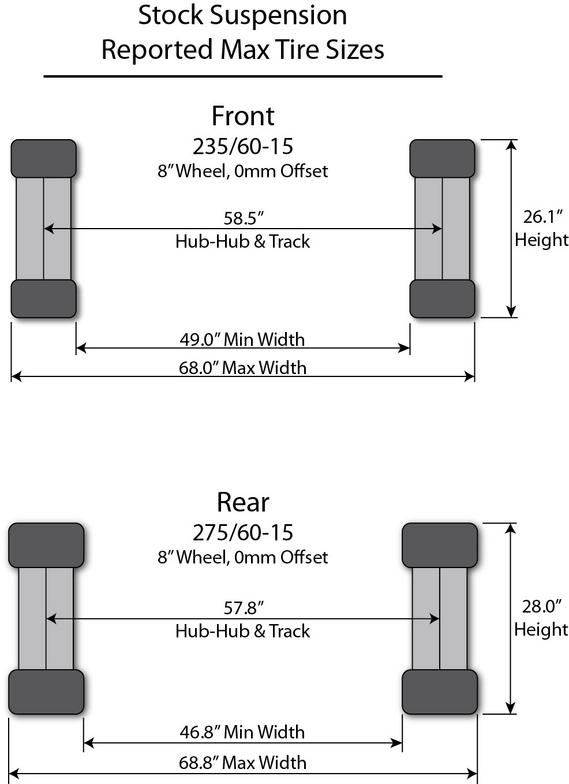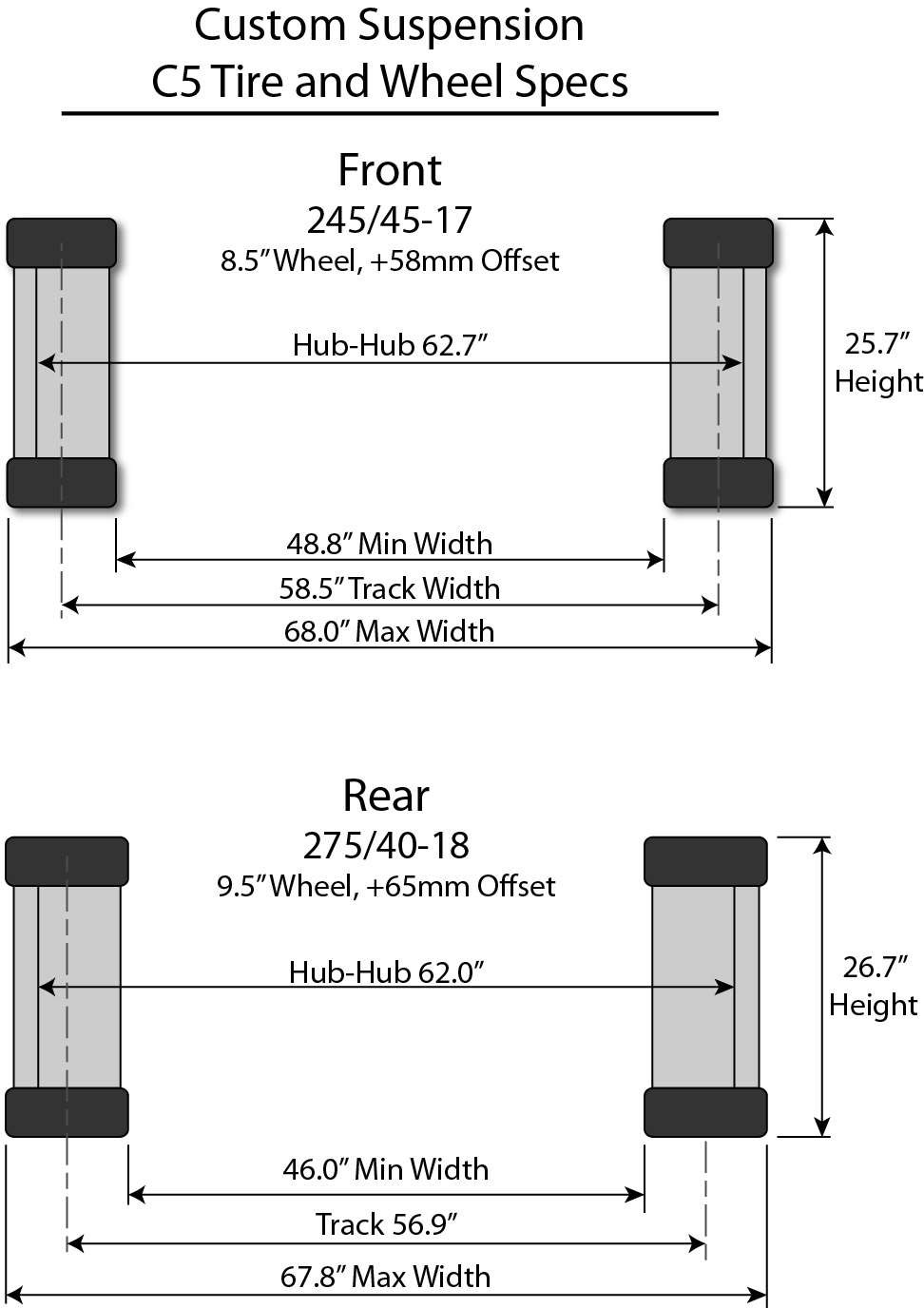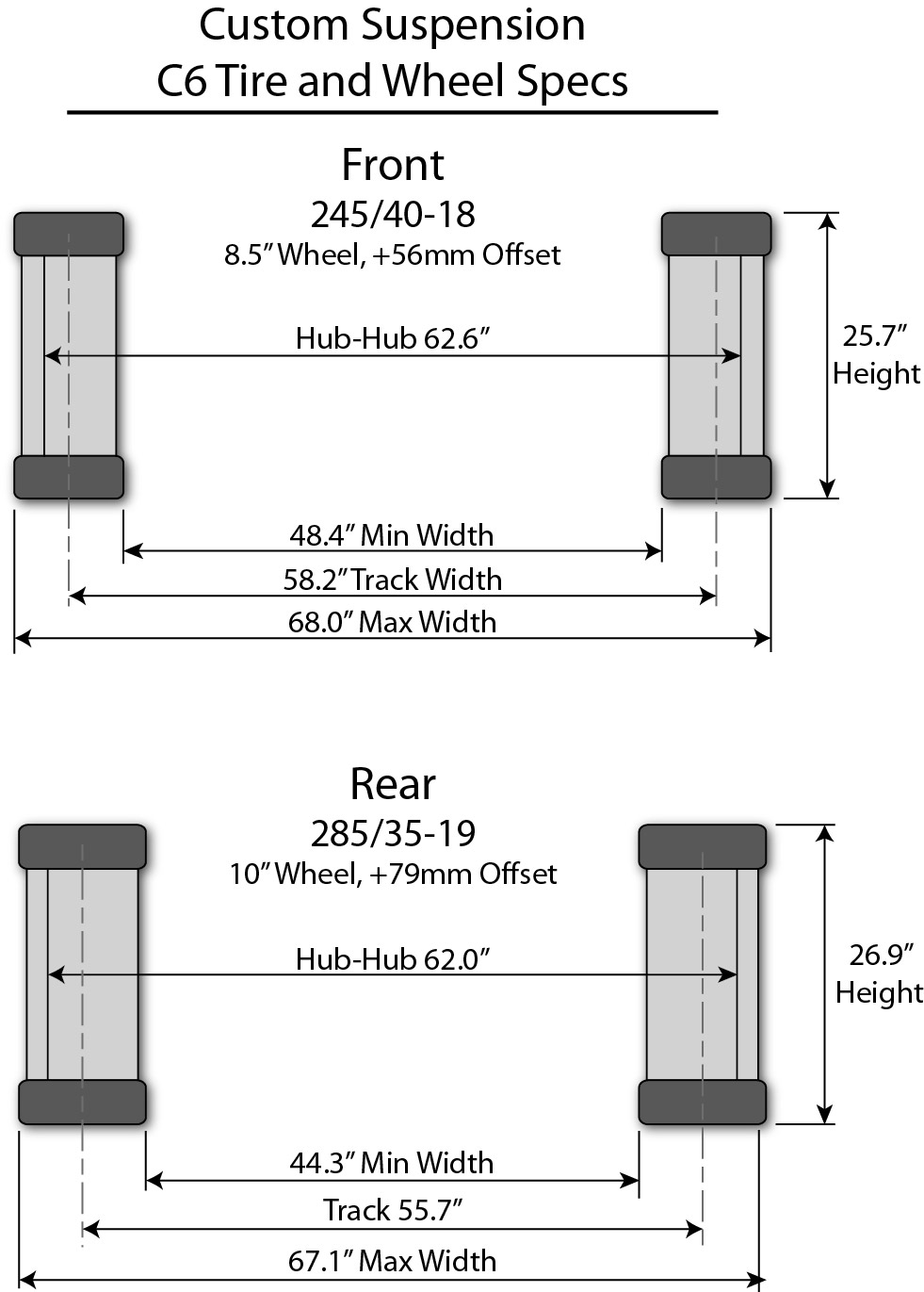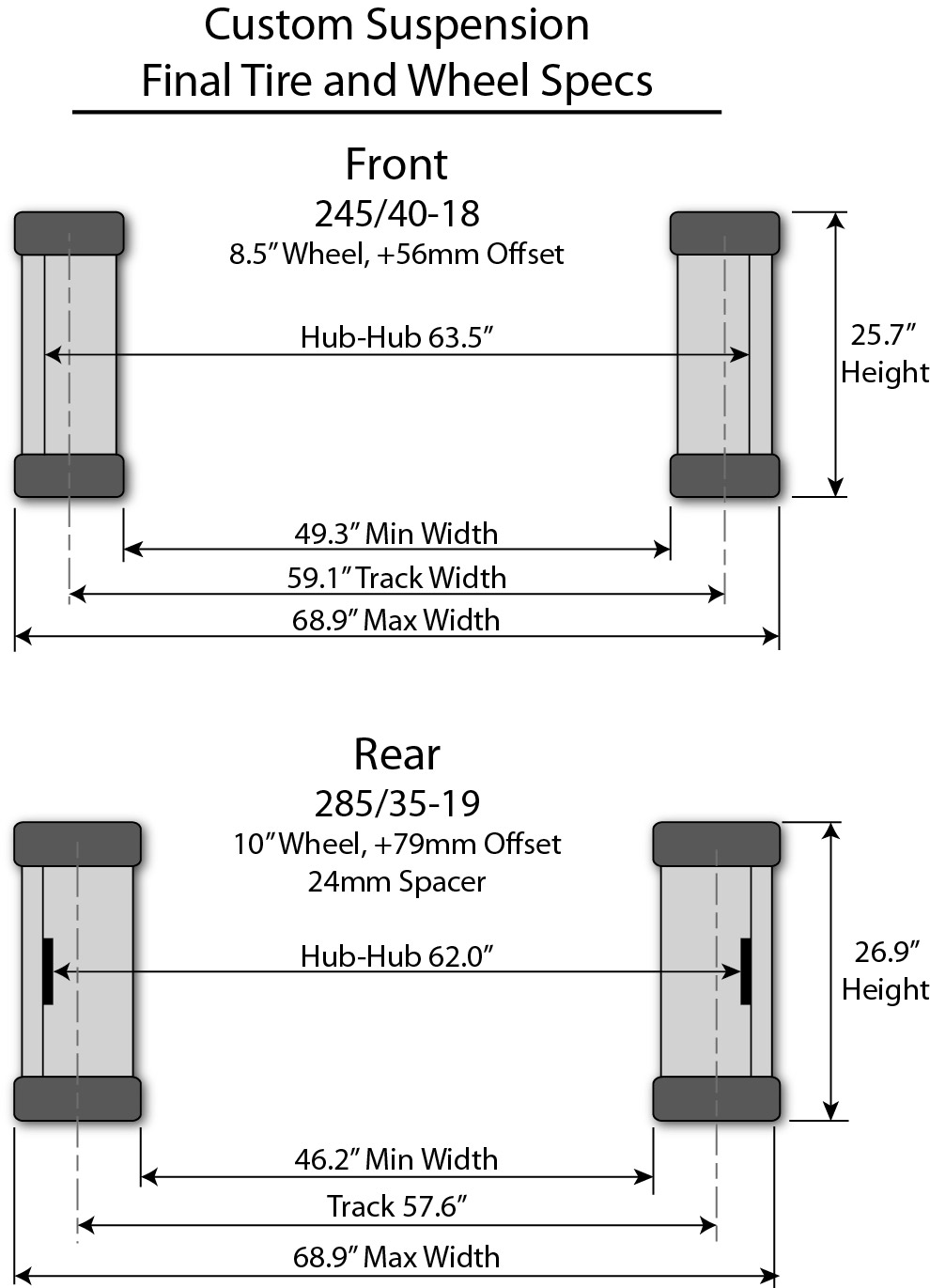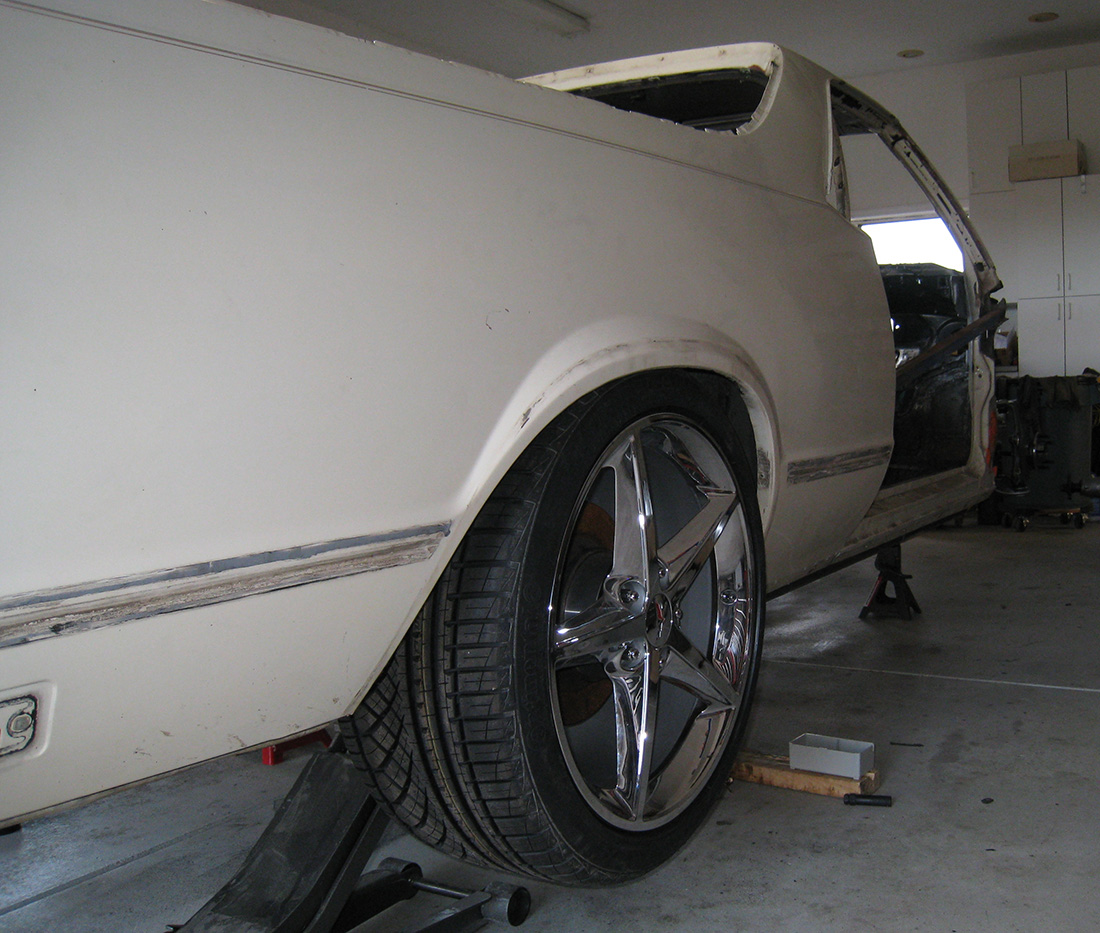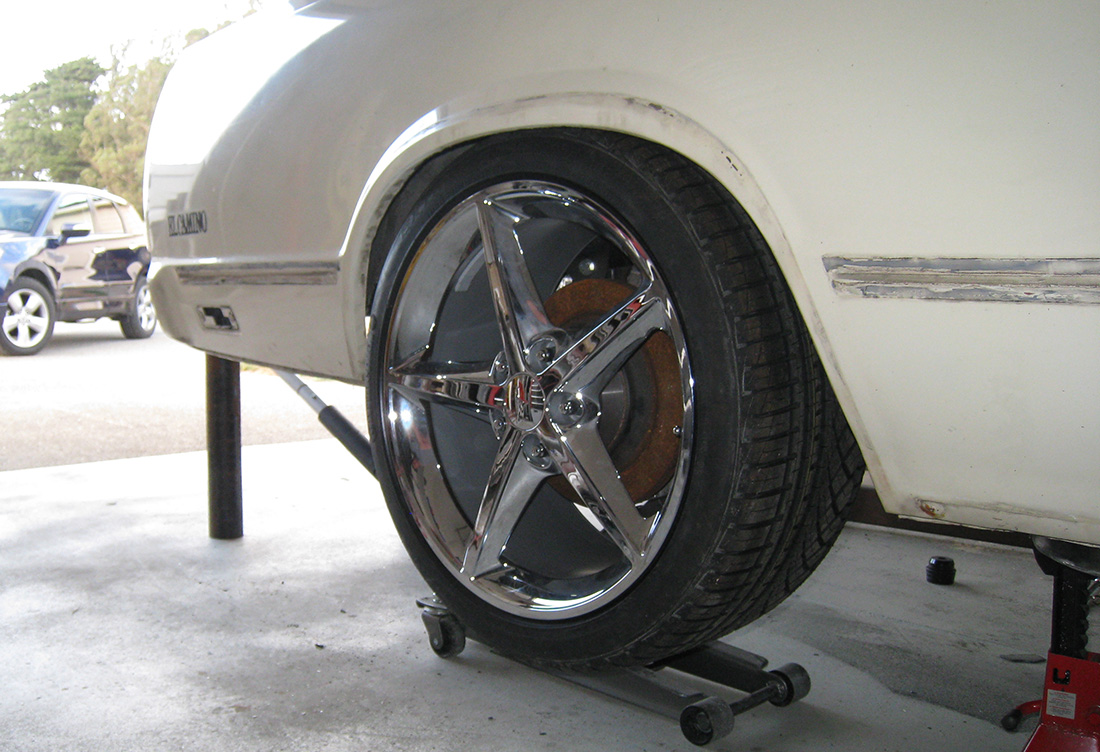Tires and Wheels
Wheel and tire specifics need to be defined before the suspension mounting point can be determined. For this project, there are three drivers which will end up defining the tires and wheels used:
Body Interference
Conclusion: The dimensions of the body and wheel openings drive much of the decision surrounding tire size. I do not intend to install fender flares, though rolling the fender lips is a possibility
ABS System
Typical ABS systems, including the system from the '06 GTO, are programmed around equal size front and rear tires. There is nothing magical about equal sized tires and ABS (Corvettes are equipped with ABS and have stagger tires), but to reuse a system programmed for the same Revolutions per Mile on the front and rear axles requires those conditions be met.
The GTO utilizes 48 tooth reluctors on the front and rear axles and was equipped with 245/45-17 tires as standard equipment. Based on information from Tirerack.com, these tires are 25.7" in diameter and are spec'd at 810 revolutions per mile. This results in the ABS system physics programmed at 38,880 pulses per mile. (for a bit of background, I'd recommend reading THIS page).
On my project I will be using C6 front ABS sensors which also use 48 tooth reluctor rings. So, if I select tires rated at approximately 811 revs/mile, I will maintain the as designed 38,880 pulses per mile. However the rear ABS sensors are coming from than '04 Cobra and have 50 tooth reluctor rings. As a result, the tire needs to have a diameter 4.2% larger than the front tires to maintain the same number of pulses per mile. A 26.77" tall tire would completely compensate . I realize that the ABS system must be able to compensate for some variation in pulses per mile because tires were and cars go around corners. However, eliminating this offset during the design stage is sound design practice and will generally eliminate unforeseen future issues.
Conclusion: Front tires need to be ~ 25.7" in diameter, Rear tires need to be ~26.8" in diameter.
Suspension Selections
The El Camino was originally designed with Zero offset wheels in mind. The design of the body set the wheel location (and to a large degree the track) and then the designers adjusted the suspension geometries and dimensions to accommodate. In this project, the suspensions I'm adapting to the car were designed with rather large positive offsets in mind. The body still sets the tire location and track, but the hub to hub spacing and suspension mounting point will be quite different.
Conclusion: the Wheel selection will be heavily influenced by the suspensions selected for use.
Analysis of the OEM Configuration.
On a stock El Camino, the tire locations and wheel specifics are as shown below:
- Interference with the car body.
- ABS system.
- Front and rear suspensions selected.
Maximum Tire Size with Stock Suspension.
The next step is to understand the body induced limitations on tire size. I thank BillyJack at Elcaminocental for this information. The drawing below pretty much demonstrates the body limits, assuming no significant fender modifications.
Modified Suspension - First Proposal
Next, I inserted the front and rear suspensions that I will be using on the project. On the rear of the car, the huh-hub distance increased from 57.8" to 62.0". On the front of the car, the suspension dictates and increase in offset from 0mm to approximately +50mm. For this pas through the analysis, I chose stock C5 corvette tires and wheels. Unexpectedly, the tire diameters match those required by the ABS system. The net result of this is shown below:
Modified Suspension - Second Proposal
For the second proposal, I substituted Corvette C6 spec tires and wheels. The net result of this is shown below:
Modified Suspension - Third Proposal
I can make some small modifications to the suspension based on the C6 pieces. First, because the scrub radius is greatly reduced with the new suspension, the front wheels can be pushed further out. Second, based on previous information, the rear max width could be increased over that shown immediately above. The net result of this is shown below:
Normally, the addition of wheel spacers is a bad idea, however in this case, the stock C6 has a whopping +79mm offset on the rear wheels, the inclusion of a 24mm spacer, decreases the offset to a still large +55mm. As a result, I can't see many negatives about their use here.
Copyright 2014, Leo Stearns
As I integrated the Cobra IRS into the frame in the 3D model, it became clear that the Cobra's rear IRS subframe mount would interfere with the inside edge of the rear tires. As a result, I needed to increase the spacer width to 40mm to clear the IRS and then roll the fender lip to clear the tire. Had I used an IRS from a Mark VIII, I could have run 315's easily, however, 285's clearing with the frame 6.5" off the ground isn't bad at all. The picture below shows the 285 tire sitting about 1 inch lower than it will in the final configuration. I can measure over 6" of total suspension travel. Given the wheel rates I'm planning on running, that will be more than enough.
